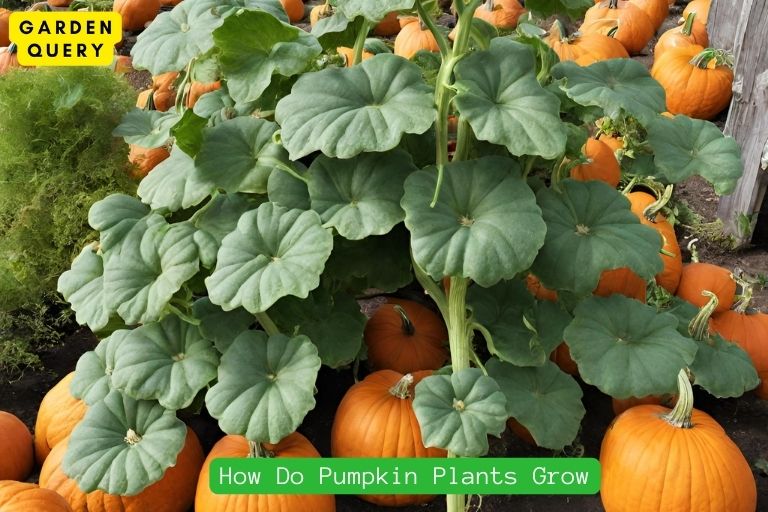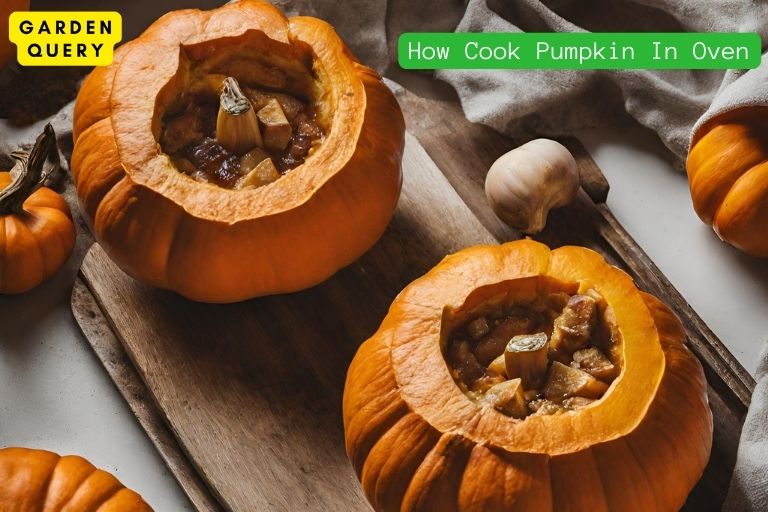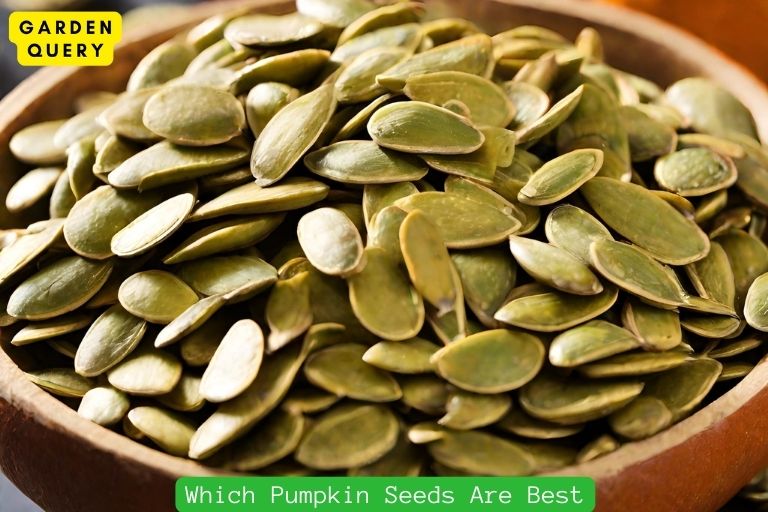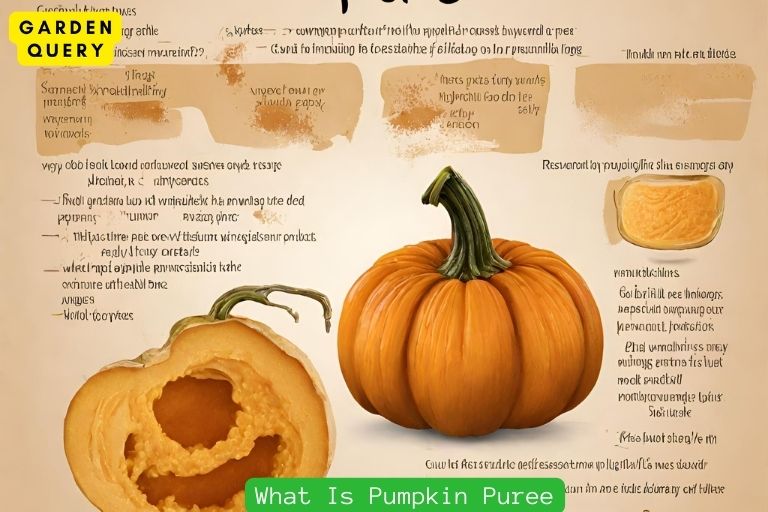How Do Pumpkin Plants Grow?
Pumpkin plants grow from seeds, developing into sprawling vines that produce large leaves, vibrant yellow flowers, and eventually, pumpkin fruits.
Pumpkin growth begins with seeds planted in fertile soil, requiring adequate sunlight and warmth. As the seeds germinate, they sprout into vines, which spread along the ground or climb on support structures.
The plants produce large, lobed leaves that aid in photosynthesis, contributing to healthy growth. Bright yellow flowers bloom on the vines, attracting pollinators like bees.
Eventually, these flowers develop into pumpkins, growing larger as the plants receive proper care, including sufficient water and nutrients.
Key Takeaway
Pumpkin Plants Grow
Why Pumpkin Plants are fascinating
Pumpkin plants are not only beautiful to look at, but they also have a fascinating life cycle.
From tiny seeds to sprawling vines and finally producing vibrant orange pumpkins, these plants capture the imagination of both gardeners and nature enthusiasts.
One of the most intriguing aspects of pumpkin plants is their ability to grow in such diverse conditions. They can thrive in a variety of climates, soil types, and even in containers.
This makes them a popular choice for gardeners worldwide.

Another fascinating quality of pumpkin plants is their rapid growth. The entire life cycle, from seed to fruit, can take as little as three to four months.
This quick growth makes them an excellent choice for gardens where you want results in a relatively short period.
The life cycle of a Pumpkin Plant
The life cycle of a pumpkin plant starts with a seed. These seeds can be obtained from a mature pumpkin or purchased from a garden center.
Once the seeds are planted in fertile soil, they require consistent watering and sunlight to germinate.
As the seed germinates, a tiny sprout emerges from the soil. This sprout grows into a vine with large, lobed leaves. The vine quickly begins to spread, often taking up a substantial amount of space in the garden.
Once the vine has established itself, beautiful yellow flowers start to bloom. These flowers are essential for pollination, as they attract bees and other beneficial insects.
Without pollination, the flowers will not develop into pumpkins.
Following successful pollination, small green pumpkins begin to form on the vine. These pumpkins gradually grow larger over time.
They transform from green to the iconic bright orange color that we associate with pumpkins.
When the pumpkins are fully grown and have reached maturity, they can be harvested. Simply cut the stem connecting the pumpkin to the vine, leaving a few inches of stem intact.
With proper care, harvested pumpkins can last for several months, making them a delightful addition to fall decorations or delicious ingredients for pumpkin-based recipes.
Pumpkin plants are fascinating due to their ability to thrive in diverse conditions and their rapid growth.
Their life cycle, from seed to fruit, is a captivating journey that showcases the wonders of nature.
Whether you’re a gardener or someone who appreciates nature’s beauty, growing pumpkin plants is a rewarding experience.
Read More: Pumpkin
Growing Conditions for Pumpkin Plants
Ideal soil and sunlight requirements
Pumpkin plants are a quintessential part of fall, and growing them can be a rewarding and enjoyable experience.
To ensure optimal growth and a bountiful harvest, it’s important to provide the right growing conditions for your pumpkin plants.
Pumpkins thrive in well-drained soil that is rich in organic matter. A pH level between 6 and 7 is ideal for pumpkin plants.
It’s also important to choose a planting location that receives at least six to eight hours of direct sunlight daily.
Without adequate sunlight, the plants may struggle to produce healthy and vibrant pumpkins.
Watering and fertilizing tips for Pumpkin Plants
When it comes to watering your pumpkin plants, you'll want to strike a balance. Overwatering can lead to root rot, while underwatering can stunt the growth of the plants.
It’s best to water deeply and infrequently to encourage deep root growth. Aim to keep the soil consistently moist but not soggy.
Fertilizing is another crucial aspect of pumpkin plant care. Before planting, incorporate compost or well-rotted manure into the soil.
This will provide essential nutrients and improve soil fertility. As the plants grow, you can supplement with a balanced fertilizer every few weeks.
Look for a fertilizer with a higher potassium and phosphorous content to promote healthy fruit development.
It’s also important to monitor and control weeds around your pumpkin plants. Weeds can compete for nutrients and water, depriving the pumpkin plants of the resources they need to thrive.
Regularly remove any weeds by hand or use a shallow hoe to prevent them from taking over.
In conclusion, providing the right growing conditions for your pumpkin plants is essential for their success.
To choose a location with adequate sunlight, well-drained soil rich in organic matter, and to water and fertilize properly.
By following these tips, you’ll be on your way to growing healthy and vibrant pumpkins that will enhance the beauty of your garden and provide seasonal delights for your table.
Read More: How Are Pumpkins Produced?
Planting and Propagation of Pumpkin Plants
For those looking to grow their own pumpkin patch, understanding the process of planting and propagating pumpkin plants is essential.
Whether you’re a beginner gardener or a seasoned pro, these tips will help you successfully grow vibrant and healthy pumpkin vines.
Choosing the right pumpkin variety
Before planting your pumpkin seeds or seedlings, it's important to select the right variety for your growing conditions and goals.
There are countless pumpkin varieties to choose from, each with its own unique characteristics.
If you’re looking for classic carving pumpkins, popular varieties like ‘Jack O’Lantern’ or ‘Howden’ are good choices.
For smaller, sweeter pumpkins that are perfect for pies and decorations, ‘Sugar Pie’ or ‘Baby Boo’ may be more suitable.
Consider the climate in your area as different varieties have varying heat and cold tolerances.
Seeds vs. seedlings: Which is better?
When it comes to planting pumpkin plants, you have two options: starting from seeds or purchasing seedlings. Both methods have their advantages and considerations.
Starting from seeds: Directly planting pumpkin seeds in your garden allows for a wider selection of varieties and is more cost-effective.
It requires more time and effort as you will need to germinate the seeds indoors and transplant the seedlings once they are established.
Using seedlings: Planting pumpkin seedlings, which are young plants already started in a nursery, can save time and provide you with a head start.
Seedlings are more susceptible to transplant shock, so it’s important to handle them carefully and ensure they have a well-prepared soil environment.
Regardless of the method you choose, pumpkins thrive in warm, fertile, and well-draining soil.
Start planting after the last frost date when the soil temperature reaches around 60°F (15°C).
Plant seeds or seedlings about 1 inch deep and space them according to the recommendations provided on the seed packet or the nursery’s instructions.
Remember to provide ample water, regular fertilization, and adequate spacing between plants to optimize pumpkin growth. Regularly monitor for pests and diseases, and provide support such as trellises or cages as the vines grow longer.
By following these guidelines, you can successfully plant and propagate pumpkin plants and enjoy the satisfaction of watching your own pumpkins grow from seed to harvest.
Caring for Pumpkin Plants
Growing your own pumpkin plants can be a rewarding experience, especially if you have a passion for gardening or want to enjoy the taste of freshly harvested pumpkins.
But how exactly do pumpkin plants grow?
We will explore the key aspects of caring for pumpkin plants to help you achieve a bountiful harvest.
Pruning and training techniques
- Remove unwanted growth: Pruning is an important technique for maintaining the health and productivity of your pumpkin plants. Remove any unwanted or damaged leaves, stems, or fruits to redirect the plant’s energy to the healthiest parts.
- Encourage air circulation: Pumpkins are susceptible to fungal diseases, so it’s essential to promote good air circulation. Prune or train the vines to grow in a way that allows air to flow freely between the plants.
- Support the vines: Pumpkin vines can be quite long and heavy, so providing support can prevent them from breaking. You can use trellises, fences, or even create slings to support the developing fruits.
Dealing with pests and diseases
- Insect control: Pumpkin plants are often targeted by pests such as aphids, squash bugs, and cucumber beetles. Regularly inspect your plants for signs of infestation, and consider using organic pest control methods like insecticidal soaps or companion planting with pest-repellent plants.
- Fungal diseases: Powdery mildew and downy mildew are common fungal diseases that can affect pumpkin plants. To minimize the risk, avoid overhead watering and ensure proper air circulation. If necessary, use fungicides labeled for use on pumpkins.
- Virus prevention: Viral diseases like mosaic virus can cause stunted growth and deformed fruits. To reduce the risk, eliminate weeds and control insect vectors. Additionally, handle infected plants with caution to prevent the spread of the virus.
Provide your pumpkin plants with consistent watering, appropriate fertilization, and ample sunlight throughout their growing season.
Proper care and vigilance are key to ensuring healthy and productive pumpkin plants.
Whether you’re growing pumpkins for Halloween decorations or delicious homemade pies, understanding the basics of pumpkin plant care will help you optimize your gardening efforts and enjoy a plentiful harvest.
So roll up your sleeves, grab your gardening tools, and get ready to watch your pumpkin plants thrive!
Read More: How Cook Pumpkin In Oven?
Harvesting and Storing Pumpkins
When it comes to growing pumpkin plants, the joy of seeing the vibrant orange fruits ready for harvest is unmatched.
But how do you know when it’s the right time to pick them? And how can you store them properly to ensure their longevity?
Determining the right time to harvest
Before harvesting your pumpkins, it's crucial to wait until they are fully ripe.
One way to determine their readiness is by examining the color of the pumpkin. For most varieties, a mature pumpkin will develop a deep, consistent orange hue.
Some specific varieties may have different color variations, so it’s helpful to research the variety you’re growing.
The pumpkin’s skin should be hard to the touch and resist puncture with your fingernail. If you find any soft spots or blemishes on the pumpkin, it may not be ripe yet.
Another indicator of readiness is the presence of a dried, brown stem.
If the stem is still green and attached firmly to the pumpkin, it’s a sign that the fruit needs more time to mature.
Proper storage to extend the lifespan
After harvesting your pumpkins, proper storage is crucial to maintain their freshness and extend their lifespan. Here are a few tips to help you store your pumpkins effectively:
- Temperature and humidity: Pumpkins prefer cool, dry environments. Ideally, the temperature should be around 50-55°F (10-13°C), and humidity should be low. Avoid storing them in damp basements or other areas prone to moisture.
- Avoid direct sunlight: Sunlight can speed up the ripening process and cause your pumpkins to deteriorate quickly. Store them in a dark, well-ventilated area to prolong their shelf life.
- Avoid contact with each other: Pumpkins can develop rot if they are stacked or touching each other. Keep them in a single layer on a shelf or a wooden pallet to prevent contact.
- Regularly check for any signs of decay: Even with proper storage, some pumpkins may still start to decay. Regularly inspect them and remove any rotten ones to prevent the spread of mold or fungus.
The lifespan of a pumpkin can vary depending on the variety and conditions, but with proper storage, you can enjoy your freshly harvested pumpkins for several months.
Whether you’re growing pumpkins for decoration, cooking, or carving, following these tips will help ensure you have a bountiful harvest and long-lasting pumpkins to enjoy throughout the season. Happy gardening!
Fun Facts and Trivia About Pumpkins
Have you ever wondered how pumpkin plants grow and what makes them so fascinating? Well, look no further!
We will explore the interesting information about pumpkin plants and discover some unusual uses for these versatile fruits.
Interesting Information about Pumpkin Plants
- Growing Conditions: Pumpkins thrive in warm climates with well-drained soil and plenty of sunlight. They require a long growing season, typically ranging from 75 to 120 days.
- Vine-Like Habit: Pumpkin plants have a trailing or creeping vine-like habit. They produce long tendrils that help them anchor to the ground and spread their leaves to absorb maximum sunlight.
- Male and Female Flowers: Pumpkin plants produce separate male and female flowers. The male flowers appear first and serve to attract pollinators such as bees and butterflies. The female flowers, which develop later, contain the ovaries that eventually turn into pumpkins.
- Multiple Varieties: Pumpkins come in various shapes, sizes, and colors. From the classic round orange pumpkins to the miniature ones, there is a wide range to choose from. Some varieties even have unique patterns and warts on their skin.
- Fast Growing: Once the pumpkins start developing, they can grow surprisingly fast. In optimal conditions, they can gain several pounds in just a few days, making them a remarkable fruit to observe during the growing season.
Unusual Uses for Pumpkins
- Pumpkin Recipes: Pumpkins are widely used in both sweet and savory dishes. From traditional pumpkin pies and soups to pumpkin bread and pancakes, there is no shortage of delicious recipes to try.
- Decorative Carvings: Carving pumpkins into spooky or intricate designs is a popular Halloween tradition. The hollowed-out pumpkins can be transformed into stunning lanterns and displayed for festive decorations.
- Pumpkin Seed Snacks: Pumpkin seeds, also known as pepitas, are a nutritious and tasty snack. They can be roasted and seasoned with various flavors, providing a crunchy and protein-packed treat.
- Animal Feed: Pumpkins are not just enjoyed by humans; animals also love them. Many farmers and pet owners feed pumpkins to their livestock and pets, as they are a good source of vitamins and fiber.
- Pumpkin Beauty Treatments: Pumpkin is rich in enzymes and antioxidants that can benefit the skin. Some beauty enthusiasts make homemade masks and scrubs using pumpkin as a key ingredient for exfoliation and revitalization.
Next time you spot a pumpkin, take a moment to appreciate its fascinating growth process and think about the multitude of ways it can be enjoyed and utilized beyond just a Halloween decoration. Pumpkins truly are amazing plants!
- Best Therapists In Dallas - February 1, 2024
- Holly Willoughby Husband: Holly Willoughby’s Love Story - January 30, 2024
- Holly Willoughby Dress: 5 Style Secrets and 7 Must-Know Career Milestones - January 30, 2024





